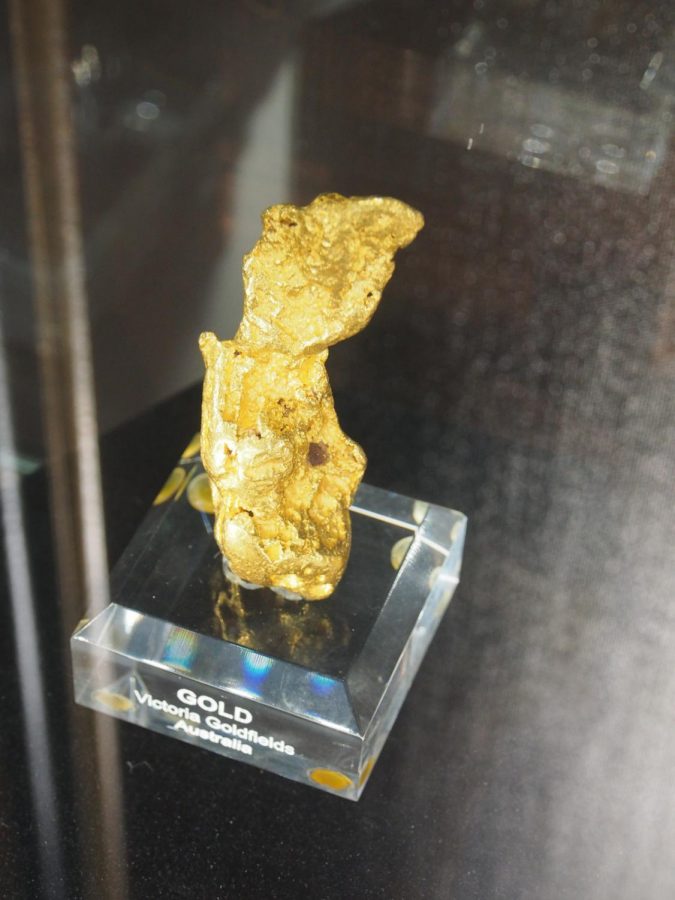Mineral Spotlight: Gold
Gold is one of the world’s most popular minerals. Gold is both a native element and a precious metal and is one of the most useful minerals mined from the earth.
Throughout history, gold has been used by almost every culture as a symbol of power, beauty and accomplishment. The first documented discovery of gold in the United States was in 1803 at the Reed Gold Mine in North Carolina. From there, gold mining spread. Throughout the 19th century gold rushes occurred whenever large deposits were discovered. The first gold strike in the United States occurred in a small town in north Georgia. Gold was also used symbolically in many traditions, being associated with divine principles, such as the golden rule.
Today, gold continues to symbolize achievements and value and is also coveted for its electronic and dental applications being used in circuit boards as well as tooth fillings. Pure gold is also the most ductile and malleable substance known to exist. A 1-ounce mass of gold can be stretched out over 50 miles. These features account for gold’s extreme versatility, being used in dentistry, electronics and decorations. Today, almost 80 percent of the use of gold is in the manufacturing of jewelry.
Gold naturally develops in quartz veins and underground water pockets, known as hydrothermal deposits. Flakes, nuggets, and small veins called “dendrites” are the most common shapes of gold. Gold nuggets form when weathering and erosion cause large fragments of gold to separate from parent rock and deposit into a river or stream. The water flows over and abrades the gold, giving it a rounded shape. Due to its weight, gold sinks to the bottom and remains there, so it can easily be panned and separated.
In its natural form, gold almost always contains traces of silver. Though gold typically has a metallic yellow appearance, the higher the silver content, the whiter the color. When it comes to jewelry making, pure gold is typically only as soft as a human fingernail and is too soft to stand up to stresses. To increase the durability of gold, craftsmen will combine gold with other elements. This affects both the monetary value and color of gold. For example, an alloy of 75 percent gold, 4 percent copper, 4 percent silver and 17 percent palladium will be white gold. Different percentages and elements can result in yellow, or even pink, green, peach, and black-colored gold.
At the Bruce Dice Mineralogical Museum, there is a gold display case containing a 6.8-ounce gold nugget from Australia. If you would like to see specimens of pure gold on display, you may check them out at the Museum, open every Wed., Thurs., Fri. from 12:30-4 p.m. in North Hall 081.







